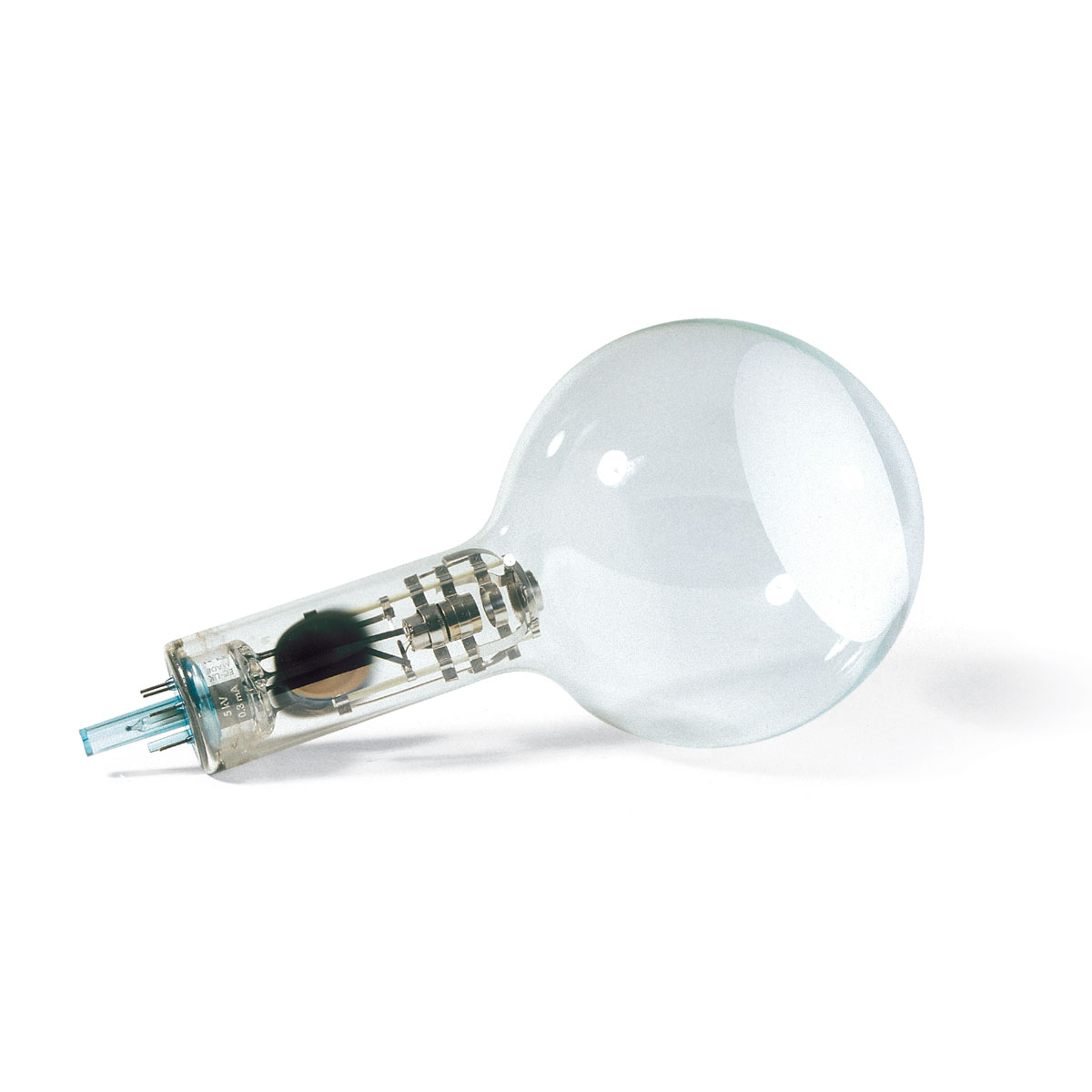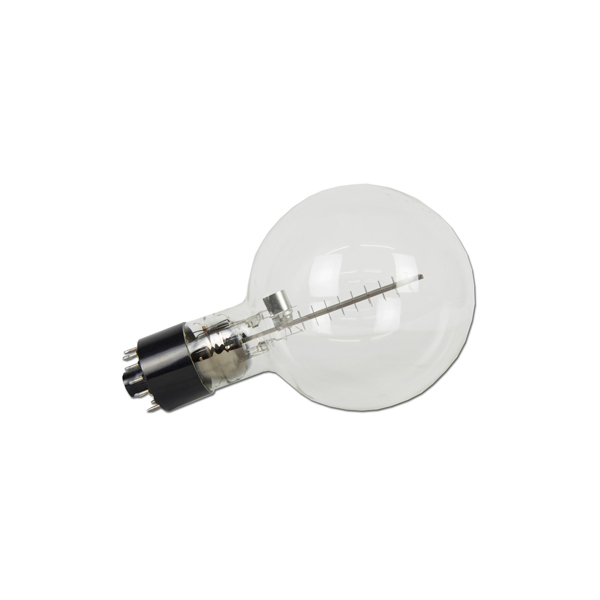Modern Physics Accessories
TEL-2501-2
Designed to accommodate the updated range of Teltron Tubes and accessories, the Universal Stand provides easy access to all plug and socket connections and gives a clear view of the experimental zone which is projected at a 20° angle. The tube can be rotated 5° to either side or vertical. A Filament Protection Circuit is an integral part of the Stand. Excessive AC or DC voltage will cause a trip condition which automatically resets after rectification of the fault condition. The Stand is mounted on rubber feet and weighs 570g. All Tube connections are made on the Stand itself.
TEL-2502
These magnetizing coils are supplied in pairs, each mounted in a slot in the Universal Stand. A metric scale within the Stand lets the coils be set in the Helmholtz configuration or in any other configuration up to 150mm maximum spacing between coils.
TEL-2555-2
With the Electron Diffraction Tube one can verify the de Broglie hypothesis and establish the dual nature of the electron. In addition, one can calculate the interatomic spacings of carbon, (the diffracting material in the tube).
TEL-2525
The Thomson e/m Tube is an evacuated tube in which a scale is printed on one side of a semitransparent square mica card. This card is held in place by two metal plates which can provide an Electric Field, E. Helmholtz Coils held in place by the Universal Stand can then provide a Magnetic Field, B at right angles to the Electric Field. A phosphor on the opposite side of the mica card will show the parabolic path of the electron beam in an Electric Field and the circular path of the beam in a Magnetic Field.
TEL-2533.02
A variation of the Franck-Hertz experiment can be performed with the Hertz Critical Potentials Tube. With this tube a beam of electrons is emitted from a hot filament and is accelerated through He or Ne gas at low pressure. (The inside surface of the glass bulb is coated with a transparent conducting layer connected to the anode to create a field-free region.) When this beam reaches a certain critical energy, inelastic collisions occur between He or Ne electrons and the electron beam. The electrons in the beam then lose their energy and are collected by a collector ring in the tube which is kept slightly positive with respect to the anode. As the electron beam continues to be accelerated, a higher critical energy is reached. At this higher energy inelastic collisions again occur between the He or Ne electron and the electron beam. Another peak will occur in the collector current. This second peak represents an energy level that is distinct and different from the first collision.
By monitoring the accelerating voltage vs. ring current 5 - 7 different and distinct energy levels plus the energy required for ionizations can be observed. (In contrast, the Franck-Hertz experiment allows you to determine only one energy level.)
TEL-2533.10
A variation of the Franck-Hertz experiment can be performed with the Hertz Critical Potentials Tube. With this tube a beam of electrons is emitted from a hot filament and is accelerated through He or Ne gas at low pressure. (The inside surface of the glass bulb is coated with a transparent conducting layer connected to the anode to create a field-free region.) When this beam reaches a certain critical energy, inelastic collisions occur between He or Ne electrons and the electron beam. The electrons in the beam then lose their energy and are collected by a collector ring in the tube which is kept slightly positive with respect to the anode. As the electron beam continues to be accelerated, a higher critical energy is reached. At this higher energy inelastic collisions again occur between the He or Ne electron and the electron beam. Another peak will occur in the collector current. This second peak represents an energy level that is distinct and different from the first collision.
By monitoring the accelerating voltage vs. ring current 5 - 7 different and distinct energy levels plus the energy required for ionizations can be observed. (In contrast, the Franck-Hertz experiment allows you to determine only one energy level.)
TEL-8482170-2
Replacement mercury tube for the Franck-Hertz experiment with mercury.
TEL-8482230
Highly evacuated electron tube containing neon, mounted on a base with socket connection for demonstrating that free electrons colliding with neon atoms emit energy in quantized packets and for determining the excitation energy of the 3P0 or 3S1 states at about 19 eV. When excited, these states emit visible light due to the energy drop from intermediate levels to a ground state at an excitation energy of about 16.7 eV. The light so emitted is in the red-yellow region of the spectrum. Parallel bands of light are formed between the control grid and the accelerator grid and can be observed through a window. The Franck-Hertz neon tube can be operated at room temperature. Tetrode with indirectly heated cathode, mesh control grid, mesh accelerating grid and collector (counter) electrode. Mounted on a base with color coded connection sockets.
TEL-8482550-115-2
Free electrons colliding with mercury atoms emit energy in quantized packet. The excitation energy at 4.9 eV can be determined. A highly-evacuated cathode ray tube with mercury gas filling and plane-parallel electrodes to avoid distortion of the field lines. Electrodes include an indirectly heated, oxide cathode, perforated to produce a homogenous electric field plus an anode grid and collector (counter) electrode. To raise the probability of collisions between electrons and mercury atoms to a sufficient amount, the tube needs to be heated using a special heater. This heater is used for adjusting the vapor pressure in the mercury filed tube. It is a spray-painted metal housing with the tube symbols printed on the front panel that are visible from a distance, ceramically insulated connection sockets, viewing windows, opening with spring clamp for thermometer in the lid, insulated carrying handle and built-in thermostat for adjusting temperature.
TEL-8482530-115
This power supply unit is designed for operating either the Ne or Hg filled Franck-Hertz tube. It provides all the voltages needed to power the tubes and includes a sensitive built-in DC amplifier for measuring collector current. The accelerating voltage can be provided manually or be means of a saw-toot output voltage from the power supply unit. Additional measuring inputs are also available for the anode current and accelerating voltage.
TEL-8557540
Experiment Topics:
· Deflection of electrons in a closed circular path inside a magnetic field.
· Determination of specific charge of an electron e/m.
For examining the deflection of electron beams in a uniform magnetic field using a pair of Helmholtz coils and for the quantitative determination of the specific charge of the electron e/m. Glass vessel with integrated electron beam system, consisting of an indirectly heated oxide cathode, a Wehnelt cylinder and a perforated anode, in neon residual gas atmosphere with precisely set gas pressure and with integrated measurement marks for parallax-free determination of the diameter of the fine beam. Gas atoms are ionized along the electron path and produce a sharply defined, visible fluorescent beam. Tube mounted on base with color coded connectors.
TEL-8481500
The Helmholtz coils are designed for use with the e/m tube. The coils can be connected in parallel or in series. A spring clip on the top crossbar can be used to mount a Hall sensor for magnetic field measurements.
Fine Beam Tube for the TEL-8481SYS3/CSFine Beam e/mSystem, MCP. This tube comes with a base.
TEL-8481500/C
The Helmholtz coils are designed for use with the Fine Beam tube.
Coil diameter: Approx. 300mm
Max. field: 3.8mT
Number of turns: 124
DC resistance: 1.2Ω (2.4Ω in series)
Max. coil current: 5A
Terminals: φ4mm safety socket
Weight: 4kg
TEL-310
The Photoelectric Effect demonstrates that the energy of a photoelectron depends on the wavelength of the incoming radiation and not on its intensity. While monochromatic radiation irradiates the photocathode, a potential is applied opposing the energy of the emitted electrons. The voltage required to just stop the current flow is proportional to the energy of the photoelectrons. Plotting this voltage as a function of the reciprocal of the wavelength gives a straight line plot. Students can use the graph's slope to calculate Planck's constant.
The apparatus includes three color filters to provide spectral separation. A small mercury arc monochromatic light source is available (TEL-ES1819). Results can be achieved with multiple laser wavelengths (pointers work well). Students can use a high power tungsten lamp with less precision. A digital voltmeter or datalogging equipment to measure the stopping potential is required.
TEL-Po-210S
Po-210 replacement source for the Rutherford Scattering Apparatus. Due to its relatively short half-life, the Po-210 alpha source must be replaced on a regular basis.
TEL-ES1819-2
The small 3-watt low-pressure mercury arc is a source of monochromatic radiation for the TEL-310 Photoelectric Effect. A stand to hold the lamp in position when using it with the Photoelectric Effect experiment is included and comes equipped with a stray light shield.


















TEL-2500-2
Eighteen maximum-quality patch cords with 4-mm-connectors for all cabling between tubes, power supplies, display units and coils.
Wire cross-section: 1 mm2
Continuous current: max. 19 A
Plug and jack: 4 mm Ø (nickel-plated)
Provides all the connectors required for use with Teltron tubes.